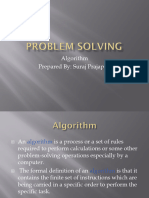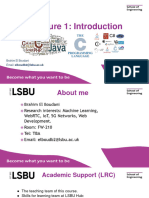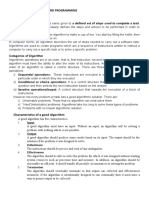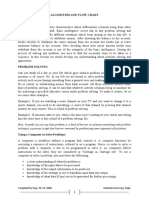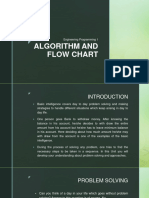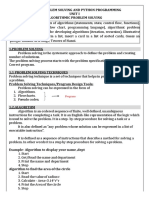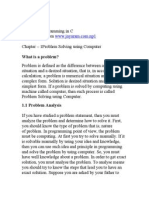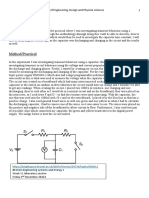0% found this document useful (0 votes)
4 views6 pagesCt2 Notes 6ab
The document provides an overview of algorithms and data, explaining that algorithms are step-by-step procedures for solving problems, while data consists of raw facts used as input or output. It discusses the importance of predicting algorithm outcomes, flowcharts for visualizing processes, and the use of subroutines for reusable code. Additionally, it highlights the advantages and limitations of flowcharts, along with common errors and their fixes.
Uploaded by
nagpalsanjna1Copyright
© © All Rights Reserved
We take content rights seriously. If you suspect this is your content, claim it here.
Available Formats
Download as DOCX, PDF, TXT or read online on Scribd
0% found this document useful (0 votes)
4 views6 pagesCt2 Notes 6ab
The document provides an overview of algorithms and data, explaining that algorithms are step-by-step procedures for solving problems, while data consists of raw facts used as input or output. It discusses the importance of predicting algorithm outcomes, flowcharts for visualizing processes, and the use of subroutines for reusable code. Additionally, it highlights the advantages and limitations of flowcharts, along with common errors and their fixes.
Uploaded by
nagpalsanjna1Copyright
© © All Rights Reserved
We take content rights seriously. If you suspect this is your content, claim it here.
Available Formats
Download as DOCX, PDF, TXT or read online on Scribd
/ 6



